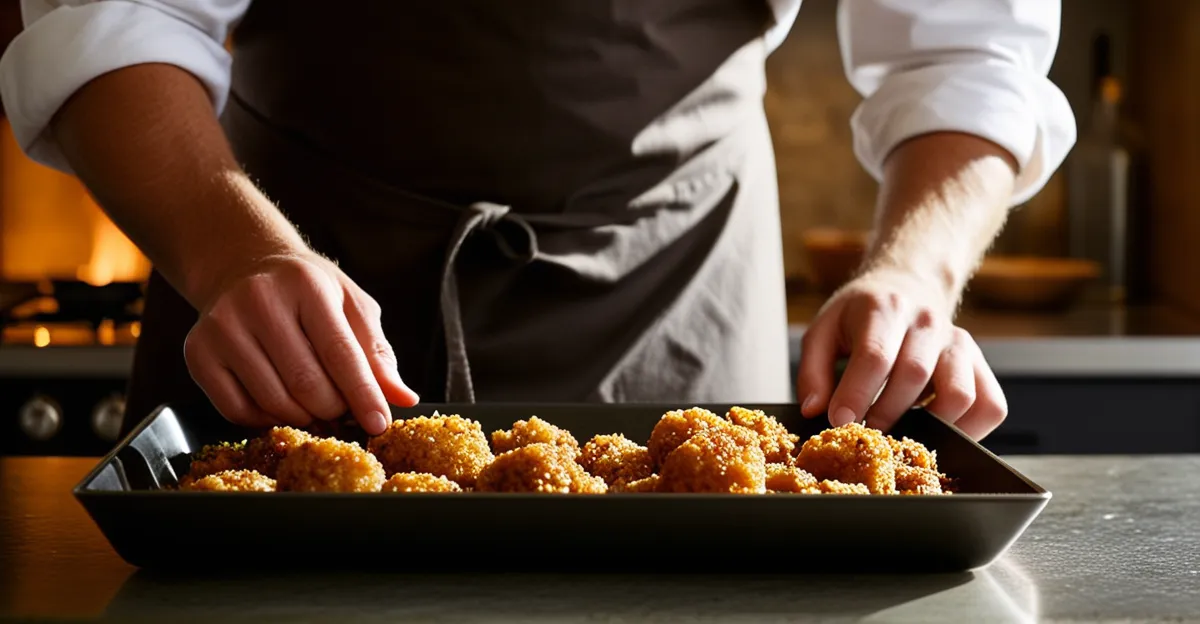Enduring British Culinary Traditions and Their Origins
British cooking traditions are deeply rooted in history, reflecting the regional diversity and socio-economic changes across centuries. Early British cuisine relied heavily on staple ingredients such as root vegetables, meats like lamb and beef, and grains including barley and oats. These foundational components shaped many traditional dishes still enjoyed today.
Historically, preservation methods like smoking, curing, and pickling were essential. These techniques ensured food longevity through harsh winters and limited storage options. Passed down through generations, they became integral to the British culinary identity. For example, salt curing for ham or smoking fish remains a hallmark practice.
Topic to read : How do you make a creamy bread and butter pudding?
Signature dishes illustrate these traditions vividly. Classics such as roast beef with Yorkshire pudding and hearty stews showcase both the use of staple ingredients and age-old cooking methods like slow roasting and simmering. These enduring recipes offer insight into Britain’s culinary past while serving as a base for modern adaptations in both home kitchens and restaurants.
Understanding these origins provides a clearer picture of how British food culture continues to celebrate its rich, historic roots with enduring respect for time-honored tastes and techniques.
Topic to read : How can you achieve the perfect balance in a classic trifle?
Enduring British Culinary Traditions and Their Origins
British cooking traditions are deeply rooted in history, reflecting centuries of cultural influences and regional diversity. Historical British cuisine evolved from a blend of native agricultural practices and external imports, shaping a unique culinary landscape. Staple ingredients such as root vegetables, grains, and meats formed the backbone of traditional British food, anchoring meals in locally available produce.
Signature techniques, passed down through generations, demonstrate a strong connection to preservation and practicality. Methods like roasting, stewing, and baking were fundamental for preparing hearty, sustaining dishes suited to Britain’s climate. Preservation techniques—curing meats, pickling vegetables, and smoking fish—ensured food availability through harsh winters and were vital to traditional British cooking practices.
Iconic dishes like the Sunday roast, shepherd’s pie, and fish and chips exemplify British cooking traditions. These meals not only highlight staple ingredients and time-honored techniques but also serve as cultural symbols that continue to influence modern adaptations. Understanding these enduring traditions provides valuable insight into how traditional British food remains relevant and celebrated today.
Influence of Traditional Techniques on Modern British Cuisine
Exploring how heritage shapes today’s culinary landscape
British cooking methods such as roasting, stewing, and baking remain central to modern British cuisine, underscoring a strong link between past and present. For instance, roasting large joints of meat—historically done over open fires or in hearth ovens—continues to define dishes like the Sunday roast. These traditional British cooking methods offer both flavour depth and comforting familiarity, appealing to a wide range of palates.
Preservation techniques like pickling and curing, once essential for survival through harsh seasons, have been reinterpreted by contemporary chefs. Pickled vegetables and cured meats now appear in sophisticated menus, highlighting a culinary evolution that honours tradition while embracing modern tastes.
Several notable chefs and restaurants actively reinterpret British cooking methods, marrying heritage with innovation. For example, slow-cooked stews might incorporate global spices or unexpected ingredients, introducing novel flavours without abandoning their roots. This fusion evidences how culinary evolution is not a replacement of historical British cuisine but a respectful adaptation that sustains its relevance in today’s diverse gastronomic scene.
Enduring British Culinary Traditions and Their Origins
British cooking traditions are grounded in a rich historical context that embraces regional diversity and staple ingredients like root vegetables, grains, and various meats. These components provided essential nutrition suited to Britain’s climate and agricultural capabilities over centuries.
Historical British cuisine reflects the adaptation to available resources and seasonal cycles, with each region developing distinctive specialties. This diversity enriched traditional British food, from coastal fishing communities to pastoral inland farms.
Signature British cooking traditions rely heavily on practical techniques such as roasting, stewing, and baking—methods that maximize flavor and preserve nutrient quality in simple, hearty dishes. Preservation methods like curing, pickling, and smoking were equally crucial, enabling longer storage and sustaining food supplies during winter months.
Iconic recipes such as roast beef with Yorkshire pudding, shepherd’s pie, and fish and chips embody these culinary foundations. They not only highlight staple ingredients but also showcase the enduring legacy of traditional British cooking methods. These dishes continue to inspire modern chefs and home cooks, ensuring that Britain’s rich food heritage remains vibrant and influential.
Enduring British Culinary Traditions and Their Origins
British cooking traditions are anchored in centuries of historical British cuisine shaped by diverse regions and climate-adapted agriculture. Root vegetables, grains like barley and oats, and meats such as lamb and beef have long formed the core of traditional British food, reflecting both availability and nutritional needs. Each region contributed distinctive specialties, influenced by local resources and cultural exchanges.
Signature techniques, essential to traditional British food, include roasting, stewing, and baking. These practical methods maximize flavour and texture while conserving essential nutrients. Preservation methods such as curing, pickling, and smoking were vital before refrigeration, allowing food to endure through Britain’s harsh winters and seasonal scarcities. These ancestral practices are not only pragmatic but also deeply embedded in culinary identity.
Iconic dishes like roast beef with Yorkshire pudding, shepherd’s pie, and fish and chips perfectly illustrate the application of these time-honoured methods and ingredients. They serve as culinary landmarks that have set the foundation for modern British food adaptations. By maintaining these traditions, British cooking continues to celebrate its rich heritage, linking past and present through enduring recipes and techniques.
Enduring British Culinary Traditions and Their Origins
British cooking traditions are deeply anchored in a historical context marked by regional diversity and climate-adapted agriculture. Traditional British food relies heavily on staple ingredients such as root vegetables, grains like barley and oats, and meats including lamb and beef. These ingredients were selected not only for their availability but for their suitability to Britain’s temperate climate and agrarian economy.
The foundations of historical British cuisine are built on practical techniques that have been passed down through generations. Signature cooking methods like roasting, stewing, and baking enabled cooks to maximize flavor and nutrition from simple ingredients. Preservation methods—curing, pickling, and smoking—were essential for retaining food supplies across seasons, especially through harsh winters. These techniques not only ensured sustenance but also forged a culinary identity that remains influential today.
Iconic traditional British dishes such as roast beef with Yorkshire pudding, shepherd’s pie, and fish and chips demonstrate how foundational ingredients and methods shaped the nation’s food culture. These recipes continue to inspire modern adaptations while maintaining a strong connection to their historical roots. This enduring legacy reflects how British cooking traditions balance heritage with evolving tastes.
Enduring British Culinary Traditions and Their Origins
British cooking traditions originate from a rich historical context marked by regional diversity and an emphasis on practicality. Historical British cuisine developed around staple ingredients such as root vegetables, meats including lamb and beef, and grains like barley and oats. These staples were chosen for their availability and suitability to Britain’s climate and farming systems. This foundation allowed traditional British food to sustain populations through changing seasons and geographical variations.
The signature techniques defining these culinary roots include roasting, stewing, and baking—methods that amplify flavors while preserving the nutritional quality of ingredients. Preservation methods like curing, pickling, and smoking were vital before refrigeration. These practices ensured food longevity, particularly during harsh winters, and strengthened the distinctive character of British cooking traditions.
Iconic traditional British dishes such as roast beef with Yorkshire pudding, shepherd’s pie, and fish and chips exemplify how foundational ingredients and cooking techniques have shaped the national palate. These dishes not only reflect the resourcefulness and regional influences of historical British cuisine but also established a culinary pattern adopted and adapted in modern British food culture. The endurance of these recipes underscores the lasting significance of British cooking traditions.


